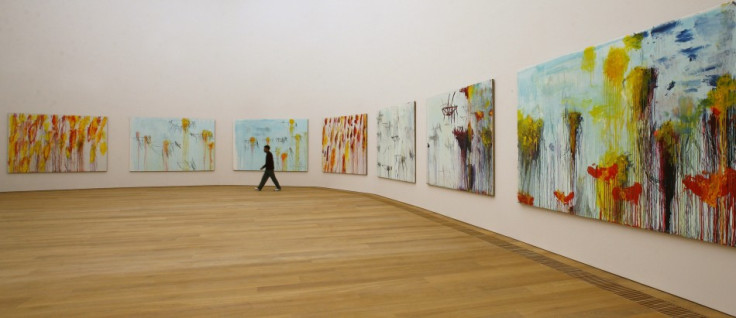Decoding the UK's Cultural Gifts Scheme and its potential tax advantages
Making a gift of a cultural object to the nation in return for a tax deduction against income, capital gains or corporation tax liabilities is worth considering.

Since March 2013 it has been possible for a UK taxpayer, be they an individual or a company, through the Cultural Gifts Scheme (CGS) to make a gift of a cultural object to the nation in return for a tax deduction against their income, capital gains tax or corporation tax liability.
The object does not necessarily have to be of high value, nor does the tax deduction given need to be large. The aim is to encourage the UK taxpayer to enrich the nation's heritage by their generosity.
The range of objects which have been accepted include a collection of paper peep shows, 18th and 19th century prints of political caricatures, a highly decorative cast iron ceiling produced in 19th century by George Smith & Co Foundry in Glasgow and John Lennon's hand-written lyrics to Strawberry Fields Forever, In My Life and She Said She Said.
The objects, which as can be seen, cover works of art, archives, manuscripts and objects of historical importance. They must meet a set criterion, be in an acceptable condition and be offered at a fair market value - what it might fetch in an auction room.
When making the offer, evidence in support of the value is submitted too. However, a concern for any owner must be how to obtain a fair deal. This is addressed by the CGS being operated by the Arts Council, rather than Her Majesty's Revenue and Customs (HMRC).
The application once made is referred to the Acceptance in Lieu Panel, a body populated by the great and the good of the art and heritage world.
First the Panel decides whether the object meets the set criteria, that is whether it is pre-eminent. In other words that it is of particular historical, artistic, scientific or local significance either individually or as a collection.
There is an alternative criteria, namely that it is associated with an important building in public ownership, such as a National Trust property, which provides public access for more than 100 days a year.
The Panel appoints their own experts, usually two in number, who inspect the object on offer and advise the Panel whether they agree with their initial assessment as to eligibility. These experts are drawn from academia, museums and the art trade.
If the criteria is met the experts then consider the value at which the object has been offered. They may decide it reflects a fair market value, or they may decide it is too high, or in some cases too low.
Where this arises, a discussion will be entered with the donor. If an agreement can be reached on value the Panel then decide whether they will make a recommendation to the Secretary of State for Culture Media and Sport, or the appropriate Minister in the devolved nations, that the proposed donation should be accepted.
The Panel in doing so will consider two further points. The first is any wish which the donor has expressed as to the final recipient museum or gallery and whether that is an appropriate resting place.
The drawback of the CGS is that a decision must to be made by the donor when making the offer and if it transpires the donor generates insufficient tax liabilities to soak up the reduction in any year, the excess reduction for that year is lost.
The second is its own budget for the CGS which is shared with the Acceptance in Lieu Scheme. In each year (1 April to 31 March) the Panel has a budget of £40m of tax forgone.
In some recent years the number and value of the objects under consideration has exceed this limit. To treat donors fairly a 'first come, first served' system is operated.
If the Minister accepts the offer, paperwork is issued for the donor to sign and the object is transferred to the recipient institution if it is not already there.
HMRC then applies a tax deduction equal to 30% of the agreed fair market value of the donated object by an individual which can be set off against income and or capital gains tax over a period of five years beginning with the tax year in which the offer is registered with the Arts Council.
The drawback of the CGS is that a decision must to be made by the donor when making the offer and if it transpires the donor generates insufficient tax liabilities to soak up the reduction in any year, the excess reduction for that year is lost.
For companies, the reduction in corporation tax is less generous at 20% of the agreed value and must be applied in the accounting period in which the offer is made.
There was a lengthy campaign during the first part of this century to encourage the Government to set up the CGS. From a slow start, it is gradually gaining momentum and the nation is clearly gaining from it.
Susan Johnson co-heads the Art and Cultural Property Group and is a member of the Private Wealth team at Bircham Dyson Bell. She advises on capital taxes particularly in relation to estate tax planning for UK and non UK domiciled individuals and also advises trustees on UK tax and a wide range of other issues. She has particular experience in advising clients on tax issues relating to art.
© Copyright IBTimes 2025. All rights reserved.






















